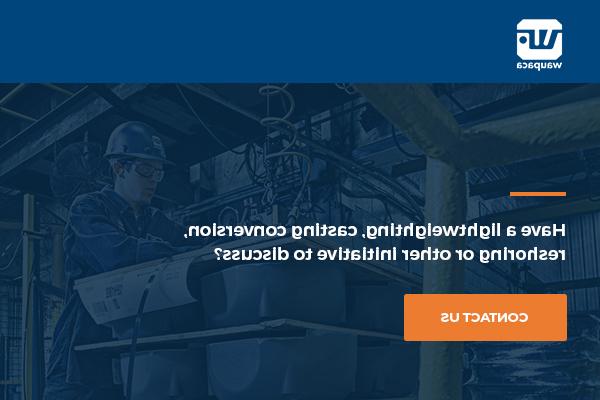Getting to the Core of Additive Manufacturing
Kim Viduski | Waupaca FoundryThe rise of automated intelligence has transformed the manufacturing landscape. Waupaca Foundry continues to invest in technology that brings consistently high quality and greater value to OEMs, Tier 1 manufacturers, and machining operations worldwide.
Additive manufacturing, popularly known as 3-D printing, is the process of creating an object by building it one layer at a time. Waupaca Foundry has leveraged 3-D printing to support the iron casting supply chain. Waupaca Foundry has expanded its use of 3-D printing to include core design and production, with successful outcomes in casting.
In 2019, a company that manufactures diesel engines had to address a major issue with one specific component. This component, made of gray iron, is called a turbo-bearing housing._1.jpg?width=330&height=197) It was a challenge, as it was anintricate six-piece assembly with a three-piece core assembly. Modeling simulations and prototypes confirmed the 3-piece core assembly viable. However, gluing the pieces together to assemble the 3-piece core was marred with inconsistencies, resulting in seam imperfections and core separation.
It was a challenge, as it was anintricate six-piece assembly with a three-piece core assembly. Modeling simulations and prototypes confirmed the 3-piece core assembly viable. However, gluing the pieces together to assemble the 3-piece core was marred with inconsistencies, resulting in seam imperfections and core separation.
Waupaca Foundry’s cold box core making generated sufficient production cores and quality gray iron castings. Some cores were scrapped because of the inadequate adhesion that caused core separation. Other cores had excessive flashing, again because of the gluing process, which necessitated additional manual grinding in the mill room.
Because of thin walls, internal iron casting scrap (called rejects) was too high. A significant portion of the core must be discarded, resulting in 67% waste.
In an effort to reduce waste from the value stream and improve both core and gray iron casting quality, Waupaca Foundry process engineers reassessed the project, considering the implementation of new technology. An ExOne 3-D printer was capable of producing a one-piece core, which eliminated every single core defect experienced in production.
Using additive manufacturing via a one-piece, 3-D printed core eliminated the need for assembly, mitigated flashing concerns, reduced processing time, and minimized waste: reduced internal core scrap to 0.96%.
To further ensure the both the core's and casting’s quality, integrity, and surface finish, Waupaca Foundry utilized ceramic sand versus conventional silica sand typically used for cores. Silica sand cracks and forms veins when it expands. Ceramic is the best choice for this application because of its detailed internal passage.
Transitioning from a three- to a one-piece core also eliminated the need for manual grinding the grey iron turbo bearing housing and significantly reduced internal rejects. It also offers inherent advantages over traditional core tooling: flexibility and convenience. This method allows for the parameters for printing to be programmed into the machine before 3-D printing. And because the diesel engine OEM only requires a volume of 600 units annually, it proves to be cost-effective.
The one-piece 3-D printed core has been improved after 18 months of hard work. The improvements were made to make manufacturing easier and ensure a steady supply. The reduction in flashing, manual grinding hours, and scrap, combined with the improved iron casting quality and on-time production has improved the diesel engine OEM’s supply chain risk.
#3dprinting
#iron-casting
#manufacturing
Additive manufacturing, popularly known as 3-D printing, is the process of creating an object by building it one layer at a time. Waupaca Foundry has leveraged 3-D printing to support the iron casting supply chain. Waupaca Foundry has expanded its use of 3-D printing to include core design and production, with successful outcomes in casting.
In 2019, a company that manufactures diesel engines had to address a major issue with one specific component. This component, made of gray iron, is called a turbo-bearing housing.
_1.jpg?width=330&height=197)
An employee at Plant 1 located in Waupaca, Wisconsin, examines the 3-D printer making castings.
Waupaca Foundry’s cold box core making generated sufficient production cores and quality gray iron castings. Some cores were scrapped because of the inadequate adhesion that caused core separation. Other cores had excessive flashing, again because of the gluing process, which necessitated additional manual grinding in the mill room.
Because of thin walls, internal iron casting scrap (called rejects) was too high. A significant portion of the core must be discarded, resulting in 67% waste.
In an effort to reduce waste from the value stream and improve both core and gray iron casting quality, Waupaca Foundry process engineers reassessed the project, considering the implementation of new technology. An ExOne 3-D printer was capable of producing a one-piece core, which eliminated every single core defect experienced in production.
Using additive manufacturing via a one-piece, 3-D printed core eliminated the need for assembly, mitigated flashing concerns, reduced processing time, and minimized waste: reduced internal core scrap to 0.96%.
To further ensure the both the core's and casting’s quality, integrity, and surface finish, Waupaca Foundry utilized ceramic sand versus conventional silica sand typically used for cores. Silica sand cracks and forms veins when it expands. Ceramic is the best choice for this application because of its detailed internal passage.
Transitioning from a three- to a one-piece core also eliminated the need for manual grinding the grey iron turbo bearing housing and significantly reduced internal rejects. It also offers inherent advantages over traditional core tooling: flexibility and convenience. This method allows for the parameters for printing to be programmed into the machine before 3-D printing. And because the diesel engine OEM only requires a volume of 600 units annually, it proves to be cost-effective.
The one-piece 3-D printed core has been improved after 18 months of hard work. The improvements were made to make manufacturing easier and ensure a steady supply. The reduction in flashing, manual grinding hours, and scrap, combined with the improved iron casting quality and on-time production has improved the diesel engine OEM’s supply chain risk.

We use cookies and other tracking technologies to personalize content and analyze our site traffic. More information about this is in our Privacy Policy. You can control third party cookies by adjusting your browser settings.
